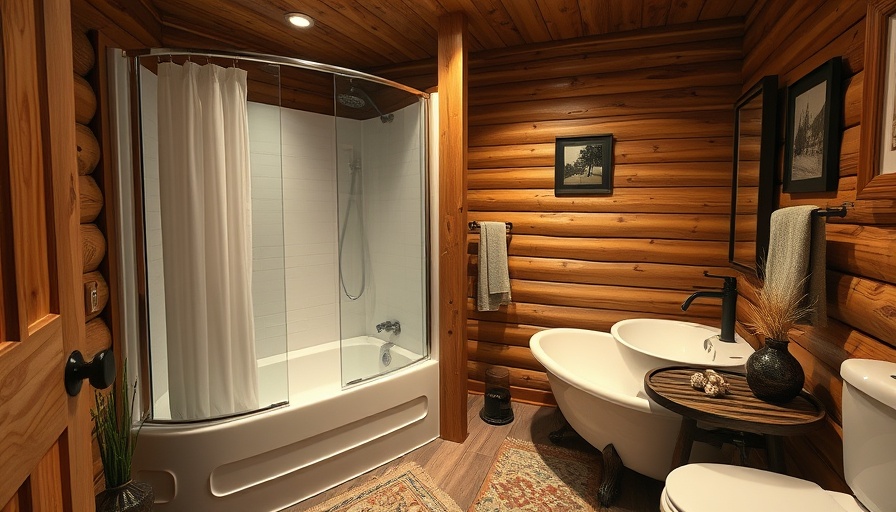
Understanding Kitchen Layouts: The Foundation of Cooking Spaces
Designing the perfect kitchen combines aesthetics with practicality, yet many homeowners overlook layout intricacies. A well-thought-out kitchen layout is foundational for both functionality and flow. The following explores common pitfalls, expert recommendations, and practical solutions to create a kitchen that's as efficient as it is stylish.
1. Inadequate Circulation Space: Open the Pathways
One of the most significant mistakes people make when renovating their kitchens is not allowing enough circulation space. Renowned designer Jenefer Gordon emphasizes, "Cramped spaces can restrict movement, making it tough for multiple users to operate simultaneously." A generous 4 feet between countertops provides ease of movement, although in smaller kitchens, a minimum of 39 inches is recommended.
2. Poor Workflow: The Kitchen Triangle
The efficiency of a kitchen lies in the age-old concept of the kitchen triangle, which connects the sink, stove, and refrigerator. When this triangle is disrupted—by odd placements or far distances—cooking can become cumbersome. For kitchens, this flow should ideally be 12–26 feet, ensuring fluid movement while cooking.
3. Disregarding Counter Space: Place for Everything
Lack of counter space can lead to chaos. It's essential to allocate sufficient countertop areas near the stove, sink, and refrigerator to enhance productivity. Consider additional islands or peninsulas for both workspace and storage. Exploring resources like California homes with these practical designs can inspire your own kitchen layout.
4. Inefficient Storage Solutions: Organizing for Easy Access
Many kitchens fall victim to clutter due to inadequate or poorly designed storage solutions. Vertical storage, pull-out shelves, and clever cabinetry are just some of the ways to ensure everything has its place. Embracing contemporary designs in California homes focuses on maximizing storage without sacrificing aesthetics.
5. Ignoring Traffic Patterns: Design with Flow in Mind
If your kitchen is a passageway, smart planning is crucial. Pathways should avoid intersecting active work zones, preventing accidents and delays. Pathway design can significantly affect how others navigate the space, especially during gatherings.
6. Bad Lighting Choices: Illuminate and Enhance
Kitchen lighting is often an afterthought, yet it serves functional and aesthetic purposes. Customized tasks lights, ambient lights, and accent lights can help create a visually pleasing and efficient workspace. Ensure all critical areas are well-lit to reduce shadows and improve visibility as you chop, cook, or entertain.
7. Overlooking Ventilation: Fresh Air Matters
A well-ventilated kitchen is an absolute necessity. Lack of proper ventilation can lead to poor air quality and lingering cooking odors. Consider integrating hoods, windows, or exhaust systems, as they are vital for maintaining a fresh and pleasant cooking environment.
8. Mismatched Appliances: Consistency Is Key
Integrating appliances that aren't in sync can create visual disarray in your kitchen. Opt for a cohesive style or color palette that aligns with your overall kitchen design. This attention to detail contributes significantly to the kitchen's aesthetic appeal.
9. Selecting the Wrong Materials: Durability Is Essential
Choosing materials that do not hold up to kitchen activities can lead to expensive repairs or replacements. Focus on durable and easy-to-clean surfaces, especially in cooking areas. Trends in California homes often emphasize sustainable materials that stand the test of time.
10. Ignoring the Importance of a Focal Point: Create a Centerpiece
Every kitchen should have a focal point, whether it’s a stunning island, a unique backsplash, or eye-catching cabinetry. This design choice adds character and draws the eye, making your kitchen not just functional but also fabulous.
Actionable Insights for Your Kitchen Renovation
Before diving into your kitchen renovation, keep these common mistakes in mind. Plan your space thoroughly, consult professionals if necessary, and invest in functional design elements. Whether it's your first home or your forever space, a well-planned kitchen can enhance your cooking experience while increasing your home's value.
Call to Action: Are you ready to transform your kitchen into a perfect cooking space? Take the next step today and consult with a kitchen designer to avoid these common pitfalls. Your dream kitchen is just a design away!
 Add Row
Add Row  Add
Add 




Write A Comment